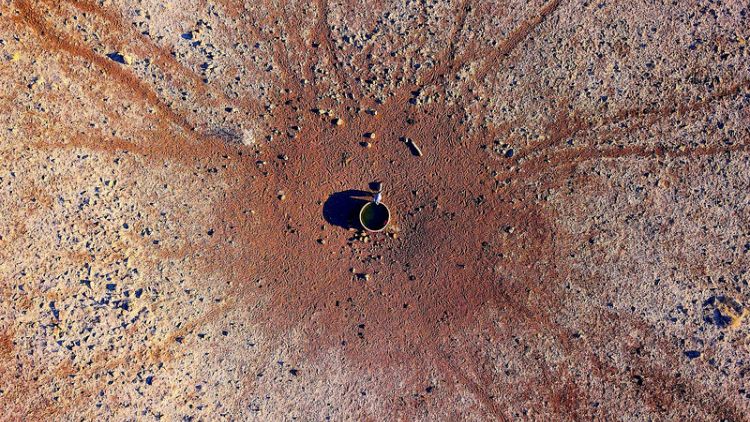(Reuters) - The worst drought in living memory is sweeping parts of eastern Australia, leaving farmers struggling to cope and asking questions about their future. For a grahic on Interactive graphic of the drought, https://tmsnrt.rs/2M4UXP7
Record-low rainfall in some regions and successive seasons of above-average temperatures have blighted vast tracts of Australia's grazing and crop land.
While the weather has improved in parts of Western Australia, winter rain has gone missing across much of the country’s east, leaving farmers praying for rain after planting seed in dry soil or culling cattle and sheep they can no longer afford to feed.
New South Wales, which just recorded its fifth-driest July on record, has been hardest hit. About 99 percent of the state – which accounts for a quarter of Australia’s agricultural output by value – is now officially in drought.
GRAPHIC - Australia drought thumbnails Rainfall: https://tmsnrt.rs/2LXOaXl
The maps below show the impact of drought on vegetation. Eastern Australia has suffered major losses since 2016, the most recent year without major drought. GRAPHIC - Australia drought thumbnails Vegitation: https://tmsnrt.rs/2M04A1k
A DUST BOWL
With grazing pastures turned to dust and feed costly and scarce, the drought is having a major impact on livestock. GRAPHIC - Australia drought thumbnails IMG: https://tmsnrt.rs/2vi4BE4
Farmers have been shipping in hay from growers in the country’s west or the far north to feed their livestock. Even those sources are now being depleted, however, and as grain silos in the south are emptied, desperate owners are being forced to slaughter animals, even if it means it will take years for herds to recover.
The cull will ultimately leave the size of Australia’s national herd at a record low, ushering in a prolonged period of livestock rebuilding and higher prices for the industry. GRAPHIC - Australia drought thumbnails Farm areas: https://tmsnrt.rs/2M8GqC0
UNDER THE SURFACE
Seeds rely not only on rainfall but also moisture already in the soil, which carries nutrients for plant growth and regulates soil temperature. The drought has devastated large swathes of eastern Australia's crop land, which supplies about a third of the nation's wheat. GRAPHIC - Australia drought thumbnails IMG: https://tmsnrt.rs/2M4te0A
Australia’s last winter was the warmest since records began more than a century ago and one of the 10 driest, sapping moisture from the earth. Dry conditions since have only made things worse, leaving farmers to plant dry and hope for rain to salvage their crops. GRAPHIC - Australia drought thumbnails Root zone soil: https://tmsnrt.rs/2M3fQtL
Last year, drought cut Australia’s output to the lowest level in a decade. This season has got off to an even worse start, with farmers planting in some of the driest soil in years. GRAPHIC - Australia drought thumbnails Moisture seasonal chart: https://tmsnrt.rs/2M8Gq4Y
Australia’s official forecaster has trimmed its estimate of this year’s wheat crop to 21.9 million tonnes, but warned yields would fall further without rain. Some private forecasters say the crop could be as low as 13 million tonnes, which would be the lowest since the drought-stricken 2008 harvest.
LOOKING DEEPER
The ground in drought-hit regions has dried out to such a depth that it is even killing large trees. Scientists have reported more swathes of forest are dying off, while farmers point to trees that have survived 100 years on their properties but which are now dying before their eyes. GRAPHIC - Australia drought thumbnails IMG: https://tmsnrt.rs/2vggqL6
Deep-rooted vegetation can access moisture down to levels of about 6 metres (yards). However, these areas have been too dry for too long, and the effects are becoming visible. GRAPHIC - Australia drought thumbnails Deep soil diagram: https://tmsnrt.rs/2M11CJR
The map below shows deep soil moisture over the last year relative to normal levels. The east is hardest hit, with large areas of New South Wales and Queensland seeing extreme deficiencies. GRAPHIC - Australia drought thumbnails Deep soil map: https://tmsnrt.rs/2M11xpx
The current dry period is not as extensive as the Millennium drought of 1997-2005, which devastated nearly 50 percent of the country’s agricultural land and was associated with two El Nino systems, which bring hot, dry weather to Australia.
But analysts and industry experts worry about how badly conditions have already deteriorated, especially since El Nino weather may be just around the corner.
"Drought is a little bit like cancer," says Margo Wollaston, who lives with her cattle farmer husband, Tom, 70, outside Tamworth in northwest New South Wales. “It sort of eats away at you, and it just gets drier and drier and more severe and more severe.”
(Content by Simon Scarr, Jin Wu, Weiyi Cai and Chris Inton of REUTERS GRAPHICS; Additional content by David Gray, Michael Perry, Richard Pullin, Colin Packham and Gerry Doyle; Compiled by Neil Fullick and Gavin Maguire.)
